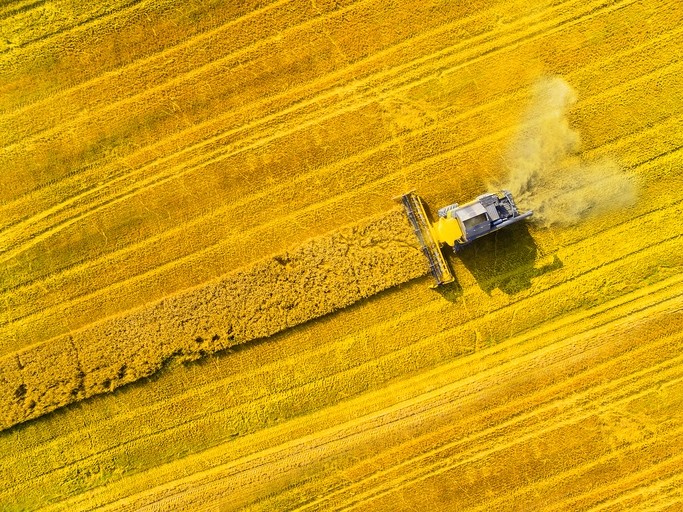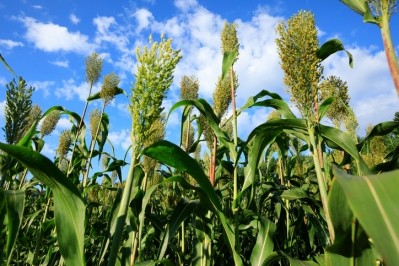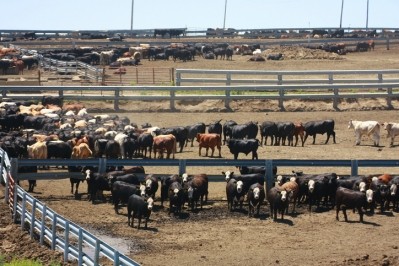Smithfield focuses on feed crop production in sustainability drive

The Virginia-based pork producing and processing company released its sustainability report in sections throughout May.
It includes data regarding the steps the company has already taken to reach its goal of reducing greenhouse gas (GHG) emissions by 25% throughout the company’s supply chain by a deadline of 2025, including projects aimed at limiting the waste sent to landfills along with reducing water and energy use.
It has also been focusing on practices related to how the feed grains used by the company are produced, said Kraig Westerbeek, senior director of Smithfield Renewables.
The company started looking at how its feed ingredients were cultivated in 2013 as part of a discussion with Walmart regarding the carbon footprint of the grain supply chain.
“Feeding those animals, feeding them the proper nutrition is a big priority, but feed is the number one cost so it makes sense to be involved in that part of the supply chain,” he told FeedNavigator.
Smithfield had already been focused on sourcing as much grain as near as possible to its facilities' locations, he said.
“Local grain is always the best for us, so we’d already started talking to farmers about price and delivery options because that is a big metric to us,” he said. “But it’s also a competitive market, and there are others vying for that market.”
In 2016, the company announced that it would have 75% of the grain purchased for use in its pig feed grown in ways that reduced the use of fertilizer and improved soil health.
“We said 75% of acres by 2018 and I’m confident we’re going to meet that,” added Westerbeek.
Feed grain sustainability
Many of the farmers that Smithfield contacted regarding potentially changing practices were interested in the program because the changes also could bring them positive economic returns, said Westerbeek. The steps or practices being suggested could improve the carbon footprint of the grain supply chain and the “bottom line” for farmers.
The company worked with the Environmental Defense Fund to establish some of the metrics involved, he said. “They’d been doing a lot of work with grain and fertilizer use optimization – we started collaborating with them back then and still are today,” he added.
“We call them best management practices,” he said. “The types of practices that we think make sense in impacting the carbon footprint.”
“Fertilizer use optimization [is one] – how much fertilizer is used per bushel of grain – as that begins to tighten, that process is more efficient and it reduces the carbon footprint linearly because it is a big part of the footprint,” he said. “Things in the toolkit [include] soil health, conservation tillage and cover crops and, overlaying all that, are the technology advancements – variable rate planting, yield monitoring, and Adapt-N.”
The technology is a nitrogen management tool, intended to reduce the runoff of nitrogen from fertilizer by creating a model of water, soil, planting and field management elements, the company said. Smithfield bought the platform in 2017 and has been getting producers involved so it can be used during the 2018 feed crop production season.
The efforts also have involved the Smithfield Agronomics program, Smithfield Gro, and work with the Land O’Lakes Sustain platform, which focuses on conservation and improving the efficiency of nutrient use and preventing soil loss, Smithfield said.
The company has received two USDA Regional Conservation Partnership Program awards, which provide funding to support farmers during the adoption of conservation practices.
Additionally, Smithfield said it wanted to help develop a market that supports the growth of alternative grains and cover crops like sorghum and winter wheat, it said.
Sorghum is naturally drought tolerant and needs little fertilizer, the company said. Planting winter wheat provides a feed input and can improve the soil for crop production during the spring and summer.
“We had a tremendous push to get more sorghum acres on the East Coast,” said Westerbeek. “It was a good alternative to corn and soybeans on the East Coast that wasn’t there before – we worked with a lot of land-grant universities and developed the production practices around that.”
“We saw the number of acres of sorghum on the East Coast grow substantially on our efforts there and a lot of that was providing a market,” he said. The company also wanted to see more wheat acres so that it could include the grain in its feed, when acres planted started to fall it provided seeds and production advice to farmers, he added.
“For wheat on the East Coast it’s grown as a winter crop and it provides a lot of the same benefits as a cover crop,” he said. “Sorghum we felt was a good alternative, when corn prices were high it might have been grown on poor acres and sorghum was a good alternative and was more suited to the types of soils.”
Another step the company has taken has been to invest $12m in grain dryers to allow producers to harvest corn crops earlier reducing risk of weather or pest damage, Smithfield said. There also has been an investment in upgrading feed mills to add capacity closer to company facilities and in buying grain elevators.
From 2010, the company has increased the amount of feed crops it buys directly from farmers from 10% to about 65%, it said.
Reported results and moving forward
The company reported that from 2014-2017 it has reduced its direct and indirect GHG emissions 5.2% . and total energy use by 7.2%.
It also continues to track how many acres are involved in the different management practices that the company has started, said Westerbeek. In addition to the environmental goals, the project has helped Smithfield continue to develop relationships with farmers in its supply chain.
“One of the challenges is how do you translate that into actual carbon reduction?” he said. “There is work that needs to be done in that area – the scorekeeping on that is something that’s going to be necessary as we move forward.”














